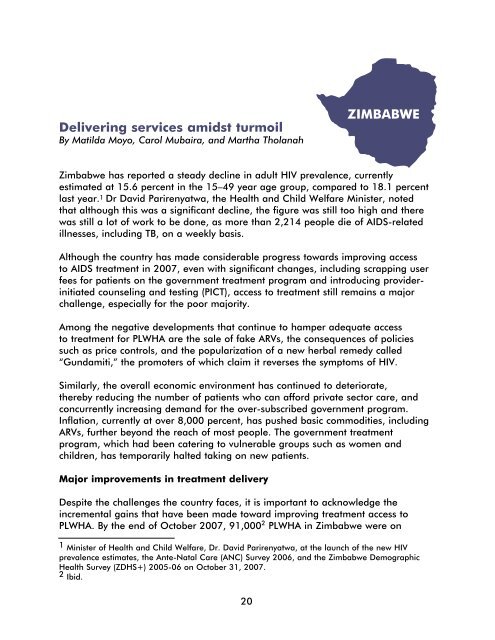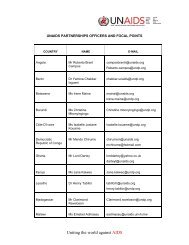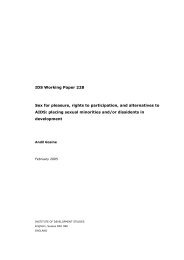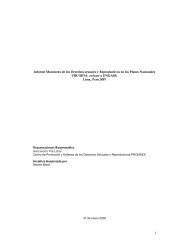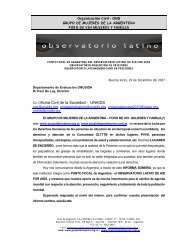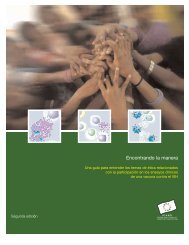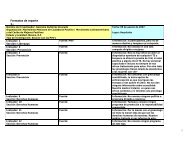Missing the Target #5: Improving AIDS Drug Access ... - CD8 T cells
Missing the Target #5: Improving AIDS Drug Access ... - CD8 T cells
Missing the Target #5: Improving AIDS Drug Access ... - CD8 T cells
Create successful ePaper yourself
Turn your PDF publications into a flip-book with our unique Google optimized e-Paper software.
Delivering services amidst turmoilBy Matilda Moyo, Carol Mubaira, and Martha TholanahZimbabwe has reported a steady decline in adult HIV prevalence, currentlyestimated at 15.6 percent in <strong>the</strong> 15–49 year age group, compared to 18.1 percentlast year. 1 Dr David Parirenyatwa, <strong>the</strong> Health and Child Welfare Minister, notedthat although this was a significant decline, <strong>the</strong> figure was still too high and <strong>the</strong>rewas still a lot of work to be done, as more than 2,214 people die of <strong>AIDS</strong>-relatedillnesses, including TB, on a weekly basis.Although <strong>the</strong> country has made considerable progress towards improving accessto <strong>AIDS</strong> treatment in 2007, even with significant changes, including scrapping userfees for patients on <strong>the</strong> government treatment program and introducing providerinitiatedcounseling and testing (PICT), access to treatment still remains a majorchallenge, especially for <strong>the</strong> poor majority.Among <strong>the</strong> negative developments that continue to hamper adequate accessto treatment for PLWHA are <strong>the</strong> sale of fake ARVs, <strong>the</strong> consequences of policiessuch as price controls, and <strong>the</strong> popularization of a new herbal remedy called“Gundamiti,” <strong>the</strong> promoters of which claim it reverses <strong>the</strong> symptoms of HIV.Similarly, <strong>the</strong> overall economic environment has continued to deteriorate,<strong>the</strong>reby reducing <strong>the</strong> number of patients who can afford private sector care, andconcurrently increasing demand for <strong>the</strong> over-subscribed government program.Inflation, currently at over 8,000 percent, has pushed basic commodities, includingARVs, fur<strong>the</strong>r beyond <strong>the</strong> reach of most people. The government treatmentprogram, which had been catering to vulnerable groups such as women andchildren, has temporarily halted taking on new patients.Major improvements in treatment deliveryDespite <strong>the</strong> challenges <strong>the</strong> country faces, it is important to acknowledge <strong>the</strong>incremental gains that have been made toward improving treatment access toPLWHA. By <strong>the</strong> end of October 2007, 91,000 2 PLWHA in Zimbabwe were on1 Minister of Health and Child Welfare, Dr. David Parirenyatwa, at <strong>the</strong> launch of <strong>the</strong> new HIVprevalence estimates, <strong>the</strong> Ante-Natal Care (ANC) Survey 2006, and <strong>the</strong> Zimbabwe DemographicHealth Survey (ZDHS+) 2005-06 on October 31, 2007.2 Ibid.20


